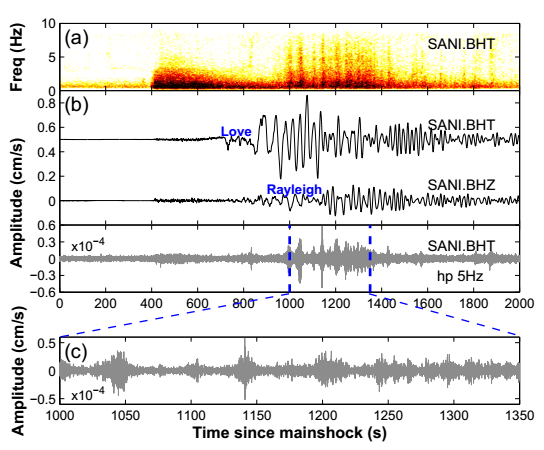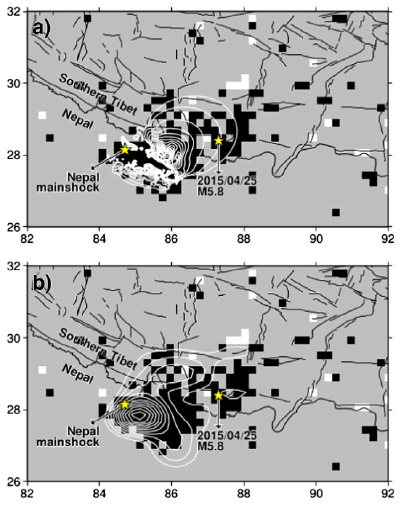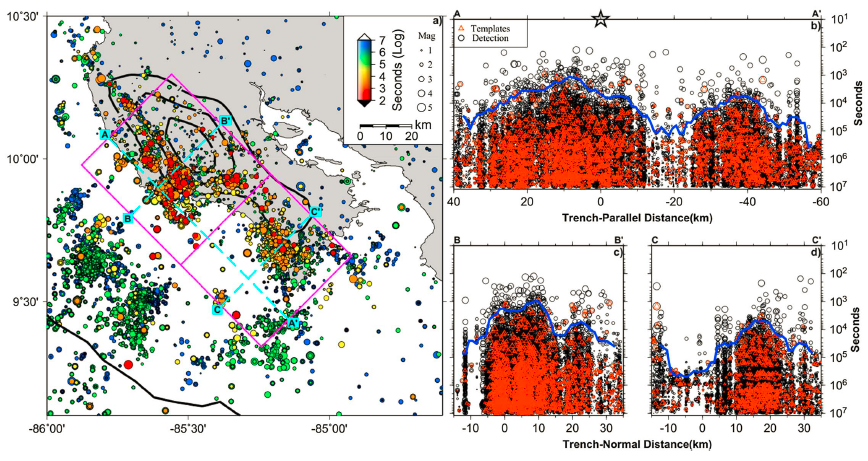Earthquake Triggering
1. Remote Distance Case (Dynamic)

Dynamic stress pertubation carried by large amplitude surface wave can propagate to tele-seismic distance and impact local critical-stressed faults. Micro-earthquakes and tectonic tremors have been found to be triggered in many regions. The above figure showed the triggered earthquake case in South-Central Tibet recorded by the HiClimb stations.
Visual inspection has been widely used to identify dynamic triggering phenamena. Mainly due to the fact that it's easier to identify in those less active region, where normally the station coverage is poor. Recording only by a few stations becomes a bottleneck for systematic investigation of dynamic triggering behavior. Fortunately, the HiClimb linear array recorded the triggered earthquake sequence near Gaize with around 10 stations. With this amount of stations, we run the earthquake detection to further confirm the seismicity rate change.

The above showed triggered tremors afte the 2012 Indian Ocean earthquake recorded by station SANI in Indonesia. The nearest stations are far and those tremor bursts are not visiable. With only one station, we cannot obtain any reliable information about it's location/magnitude.
IRIS Timeseries Web Service provides awesome tool for quickly checking individual stations. For example, you can play with station GE.UGM durint the 2012 Indian Ocean earthquake, when triggered tremors were reported. You can also see triggered earthquake in station XF.H1490 during 2004 Sumatraand 2005 Nias earthquake.
2. Intermediate Distance Case (Static V.S. Dynamic)

Li et al. (2016) reported elevated seismicity in Southern Tibet with two Mw larger than 5.0 normal events following the Gorkha Nepal earthquake. The target area experienced positive Coulomb Stress Change, which would promote the occurrence of seismic events. In the meantime, the dynamic stress perturbation is about two orders larger compared to Coulomb Stress Change. The triggering phenomenon could be a combination of both sources.
3. Near Field Case (Static? Dynamic? Others)

Mechanism for generating aftershocks is also under debate. More and more observations reveal that multiple mechanisms might be responsible for the spatio-temporal distribution of aftershocks.
Earthquake Detection/Relocation

The above figure shows the idea of template matching: known events are used as 'templates' to cross-correlate with continuous waveform, and events close to the template would have certain similarities and can be picked out.
Relative location combining the catalog phase ttimes and cross-correlation differential ttimes.
